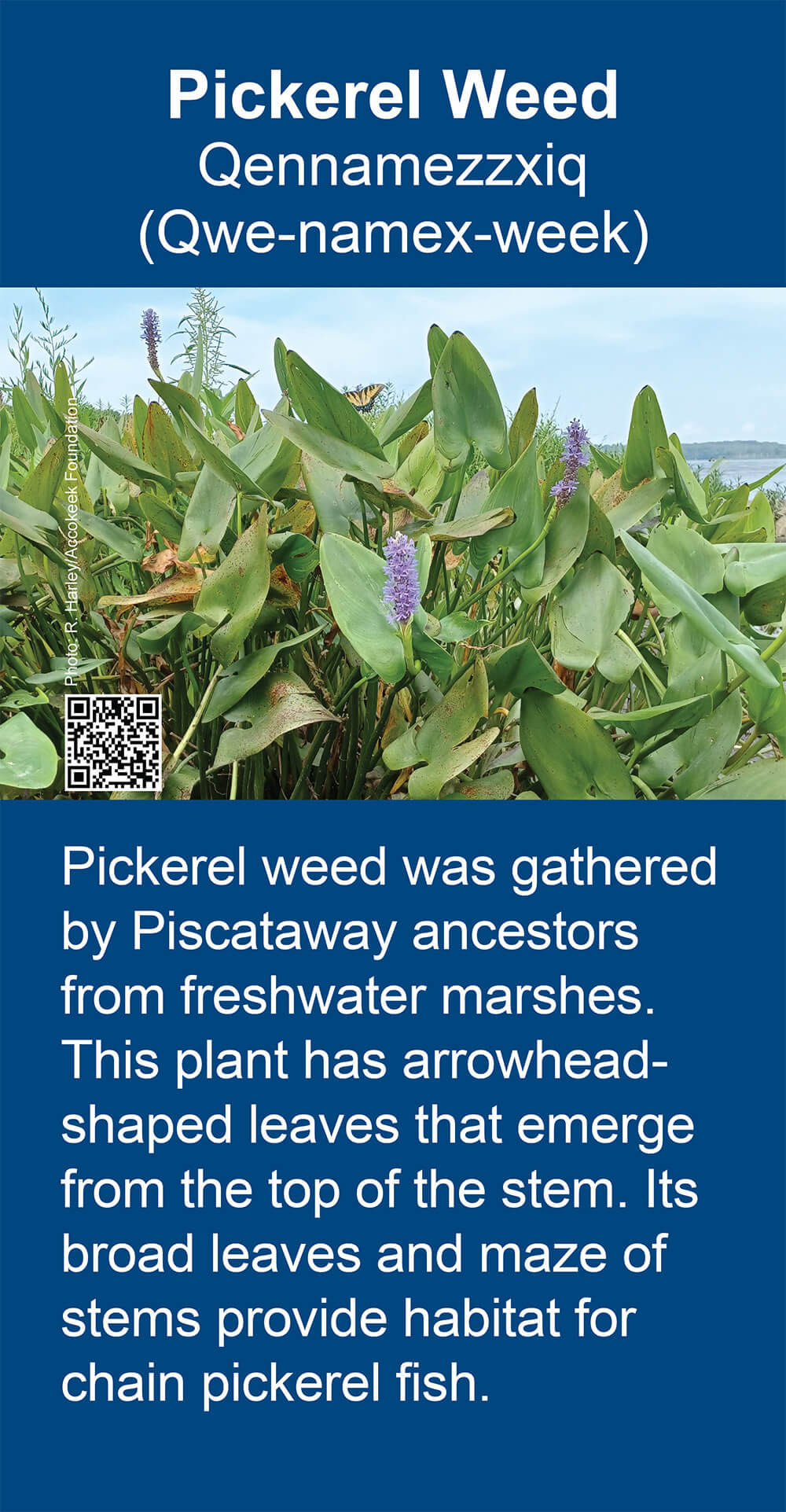Pickerel – Qennamezzxiq - (Qwe-namex-week)
Pickerel weed was gathered by Piscataway ancestors from freshwater marshes. This plant has arrowhead-shaped leaves that emerge from the top of the stem. Its broad leaves and maze of stems provide habitat for chain pickerel fish. Photo: R. Harley/Accokeek Foundation

A Further Piscataway Perspective
Pickerel Weed was gathered by our ancestors from the freshwater marshes, or the shallow waters near the banks of creeks or rivers. This plant has large, thick, dark green, heart or arrowhead-shaped leaves which emerge from the top of each stem. Its broad leaves and a maze of underwater stems provide a habitat for the Chain Pickerel fish, from where the plant derived its name.
It is easily identifiable by the purple flower growing from its stem that appears in late spring. Its flowers bloom continuously all summer and continue to do so into the fall. In the fall, the Pickerel Weed flowers stop blooming and produce seeds from the flower’s spike. The flowers’ spike produces a fruit that contains a nutritious, starchy seed that can be eaten straight from the plant or dried. The dried seeds can also be boiled; roasted to improve flavor; or grounded into flour.
The young Pickerel Weed leaves were eaten raw in salads or boiled. Its seeds are often eaten by deer, muskrats and waterfowl.
Tuckahoe and Pickerel Weed at Mallows Bay Park
Anjela Barnes (Piscataway), Executive Director, Accokeek Foundation at Piscataway Park, shares the cultural significance of the tuckahoe and pickerel weed at Mallows Bay Park in Nanjemoy, Maryland. Credit: National Marine Sanctuary Foundation, Accokeek Foundation, NOAA.

